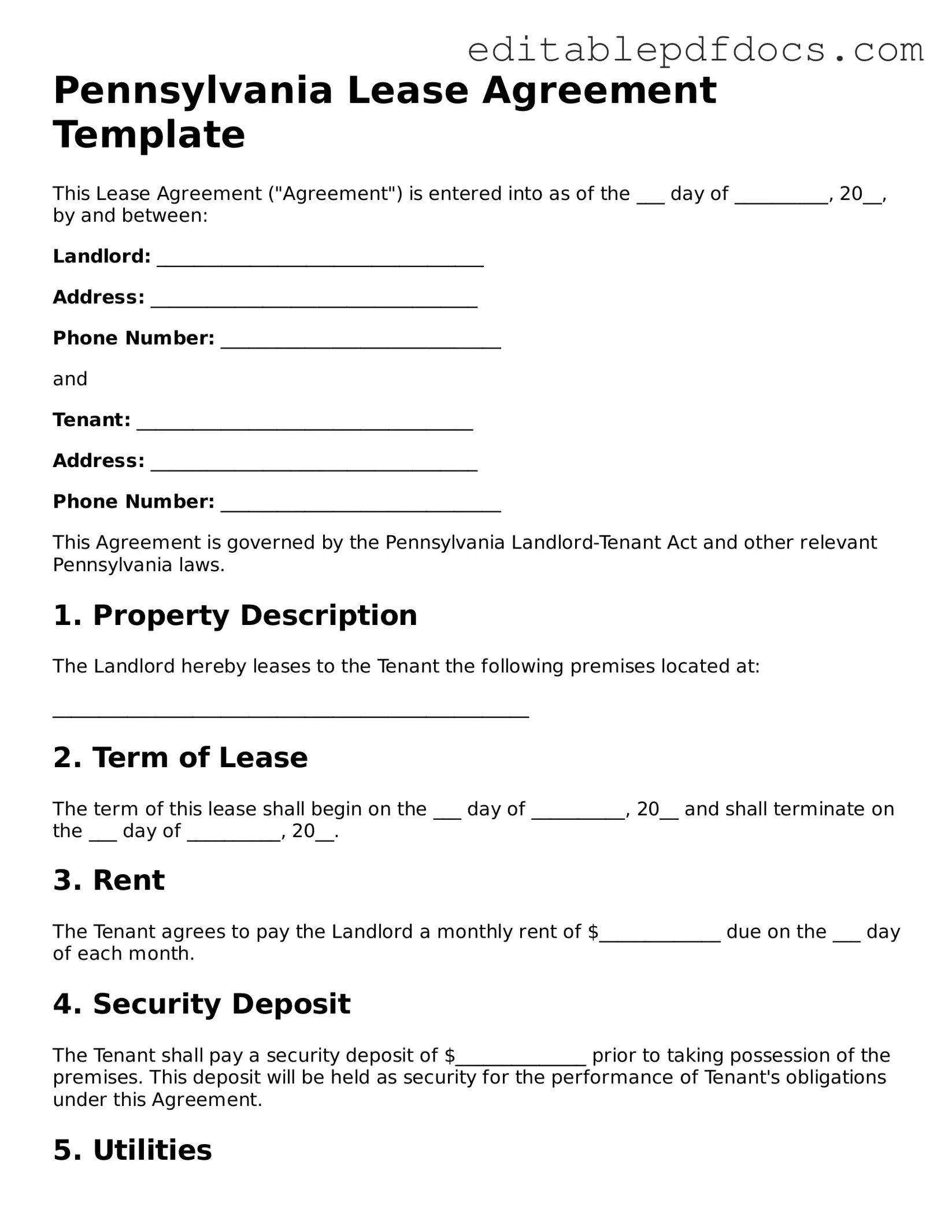Lease Agreement Document for Pennsylvania
A Pennsylvania Lease Agreement form is a legal document that outlines the terms and conditions between a landlord and tenant for renting a property. This form serves as a crucial tool to protect the rights of both parties, ensuring a clear understanding of responsibilities and expectations. Ready to secure your rental agreement? Fill out the form by clicking the button below.
Open Editor Now
